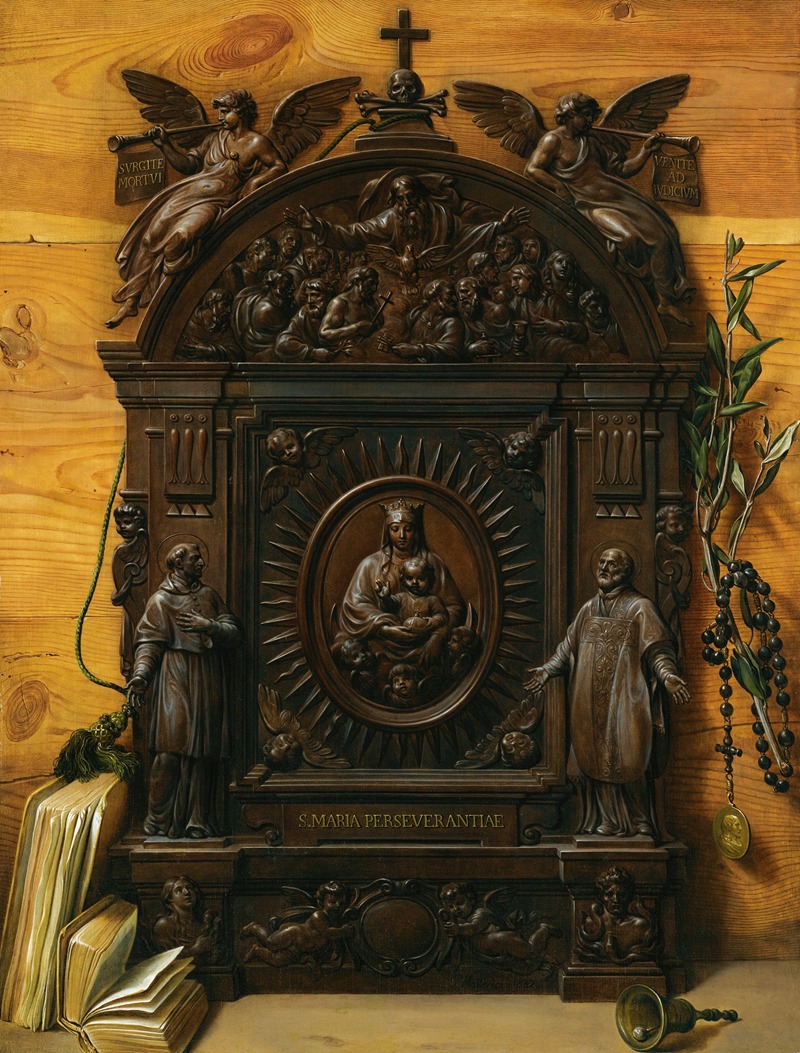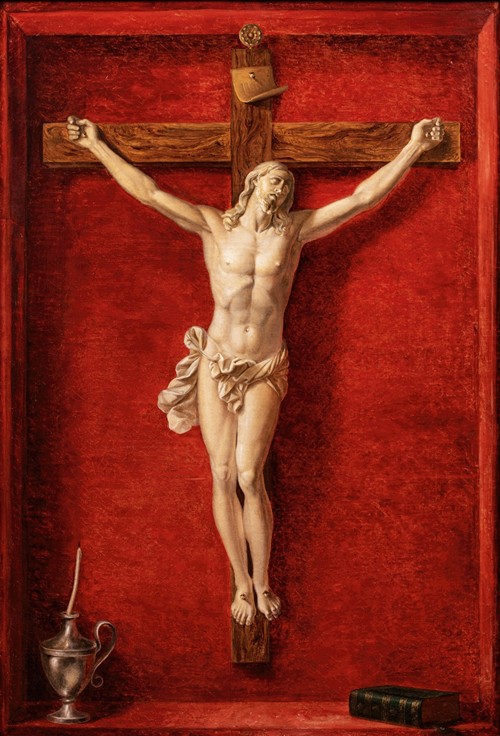
Prospero Antonio Felice Maria Mallerini or Mallarini was an Italian painter.
Ancestor of the future Pope Pius XII, the young Prospero was sent to Rome by his family to study law. In the capital, however, he discovered his vocation as a painter, and began to frequent various workshops. Furthermore, in Rome he met the Barberini family, with whom he had a long-standing friendship, and for whom he executed works of architecture and painting.
Following his marriage to Eleonora De Rossi he fathered four children: Teresa, Geltrude, Filippo and Marianna. The existence of the latter, in particular, was identified by historians only recently, and recognized as Sister Teresa Vittoria of San Giuseppe at the Monastery of S. Giuseppe a Capo le Case, where the young girl had taken her vows in 1817.
Mallerini also worked in Umbria: in Cannara in 1797 he painted the canvas on the altar of the parish church of San Matteo, depicting the Virgin and Child, Saint Anthony of Padua and Saint Rocco. In Assisi, in the church of the Confraternity of Saint Catherine, scholars also attributed to him the two-sided banner representing the Martyrdom of Saint Catherine of Alexandria and Saint James the Greater and Saint Anthony the Abbot, executed in 1810.
It was precisely the activity in Umbria that allowed scholars to identify the work of Mallerini, who had been unknown for a long time.
However, it was in Rome and in the Papal States that Prospero executed most of the works, purely religious subjects, such as the 1829 altarpiece in the church of San Carlo alle Quattro Fontane, depicting the Ecstasy of the Blessed Giovanni Battista della Concezione.
Prospero Mallerini became known above all for the Portrait of the Family of Don Carlo Barberini, painted in 1802, and which for a long time was indeed his only known work. In the painting he portrayed a group of twelve people in a room not corresponding to any recognizable environment in the Palazzo Barberini, and therefore a probable creation of the artist's imagination. In the work he painted the family members accompanied by objects acting as attributes, to indicate the inclinations and talents of each, setting the composition according to a rhythm of arsi and thesis, with the head of the family in a central position.
The artist stood out for his "coherent personality" and "substantial stylistic constancy both in the portraits and in the altar paintings", all characterized "by the marked evidence" of the objects "characterized as true 'still lifes', or in more episodic and accessory function".
Some canvases, such as that of the Virgin and Child from 1797 , showed obvious consonance with the ways of Pietro Labruzzi, suggesting a possible direct relationship between the two painters, and perhaps even the hypothesis of a link between school and workshop. It was in fact Mallerini who created the drawing for an engraving from a now lost painting by Labruzzi, the Meeting between the Blessed Lorenzo da Brindisi and Maximilian of Bavaria, executed in 1783. The two artists shared "the detailed description of clothes and furnishings", although Mallerini achieved "qualitatively higher results".
As an architect he designed a sferisterium which was built in 1837 in Palazzo Barberini alle Quattro Fontane.


